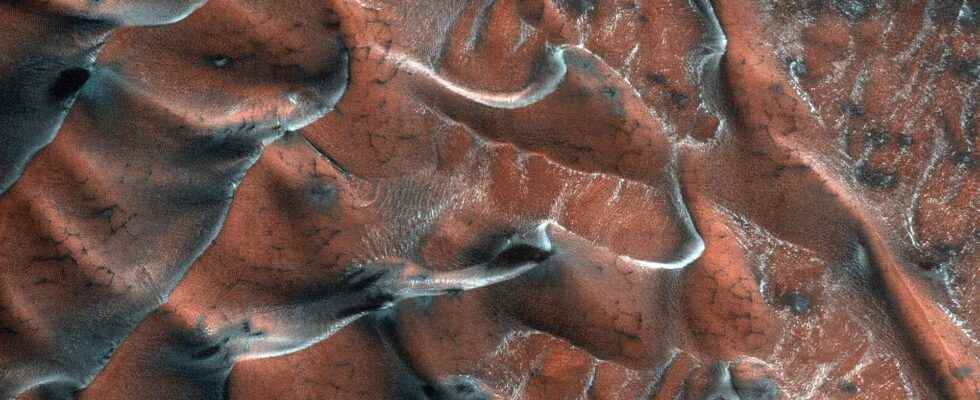Dunes are not a terrestrial specificity. The winds blowing on the surface of other planets, such as Mars and Venus, are also capable of creating this type of sedimentary construction there. These dune fields would also be excellent analogues for determining the environmental conditions of more distant exoplanets.
You will also be interested
[EN VIDÉO] Ingenuity, further and faster for its third flight This Sunday, April 25, 2021, Ingenuity, NASA’s Martian helicopter made its third flight. A flight immortalized once again by the Mastcam-Z of the Perseverance rover, parked a few dozen meters away. Ingenuity this time flew up to 50 meters downstream from the landing point, stepping out of camera view. All for a flight of some 80 seconds at about 2 meters per second. © NASA/JPL-Caltech/ASU/MSSS
Beaches, desertsmarine environments, lake or fluvial, the environments giving rise to dunes are numerous on Earth. Present today, these sandy constructions are also observed in the geological series fossils. The study of their forms also allows scientists to reconstruct the past environments in which they were formed. It is thus possible to know if they have developed under the action of wind or water, to determine the direction of the currentits direction, its power… The information contained in the dunes is numerous and particularly valuable for the determination of paleoenvironments and paleoclimates throughout the history of the Earth.
More than 8,000 dune fields in the Solar System
But the dune fields are not a terrestrial particularity, far from it! We find them on other planets of our Solar systemespecially on Mars, Venus or Titanthe largest satellite of Saturn. And just like for the Earth, their study allows to have an idea of the environmental conditions which reign on these planets. The Rosetta probe even observed dune structures on the comet 67P/Churyumov-Gerasimenko, which is characterized by the presence of a very fine and ephemeral atmosphereformed by the vaporization of the ice as the comet passes near the Sun. The generation of this transient atmosphere seems to have the ability to mobilize surface particles, causing the formation of small wrinkles.
Dunes on Titan, Saturn’s moon. © NASA, JPL-Caltech, ASI, Paris-Diderot University
To date, planetary scientists have identified some 8,000 dune fields in the Solar System, especially dunes wind turbineswhich bear witness to the action of winds on these planets. On Mars, more than 4,000 dune fields have been mapped. Their morphologies are moreover very diversified, testifying to varied training processes. Thus, most aeolian dunes have parabolic, longitudinal shapes, in barchans, dome or star. All its forms are observable on Earth but also on other planets with dune fields. The barchan shape is the most frequent type on Mars, while the longitudinal dunes are representative of the equatorial regions of Titan.
Mars and Venus, two extreme cases to understand the relationship between environmental conditions and dune formation
The study of Mars and Venus allows scientists to study the formation of dunes under atmospheric conditions very different from those on Earth. The case of Venus is particularly interesting, since the planet has an extremely dense atmosphere. Under this important atmospheric pressurethe Venusian winds have dynamic characteristics quite similar to those of terrestrial ocean currents.
Conversely, the tenuous atmosphere of Mars makes it possible to study the formation of dunes in an environment opposite to that of Venus. The observation of the morphologies of the Martian dunes makes it possible to model the variations in the direction of the winds and thus to validate the climate models of the Red Planet. With the successful flights of small Ingenuity helicopter currently on Mars, scientists expect to significantly refine their knowledge of Martian dunes.
The comparison of all the data (dune morphology, atmosphere, weather…) on Earth, Mars and Venus currently allow scientists to build a general model of the formation of dune fields that can be used to assess environmental conditions on more distant planets, outside our solar system.
Interested in what you just read?
